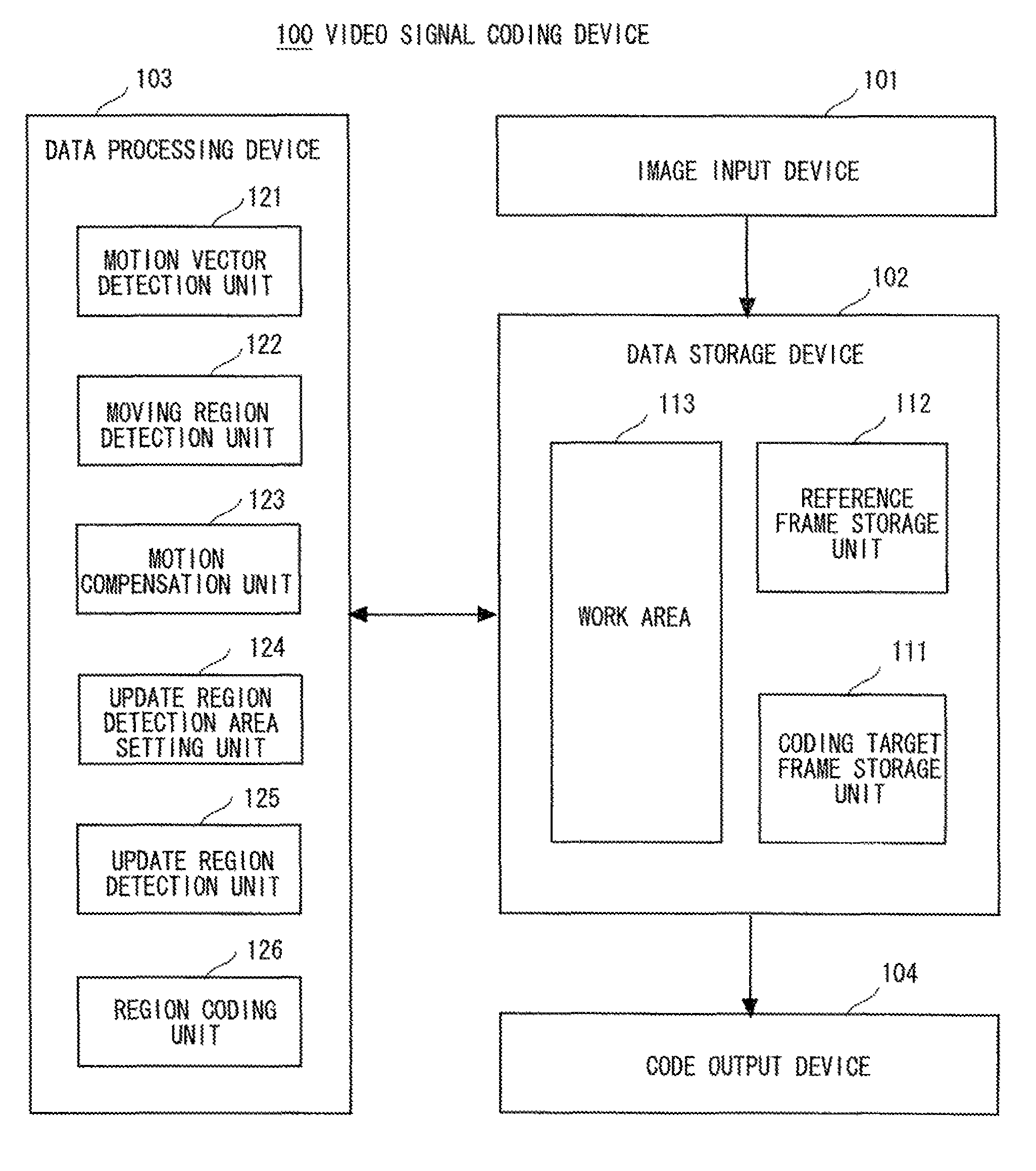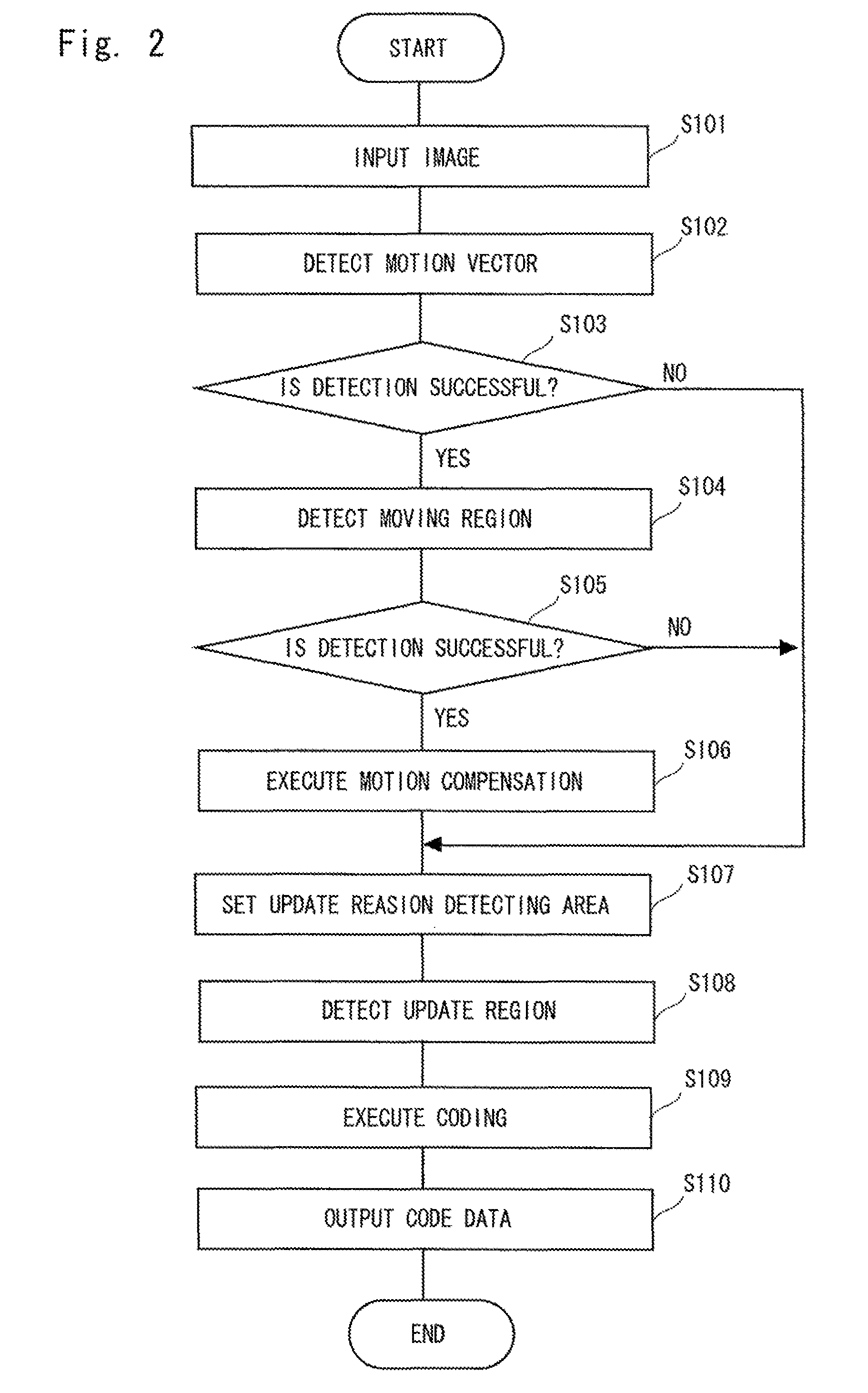Motion vector detection device
a detection device and motion vector technology, applied in the field of motion vector detection devices, can solve the problems of large number of different moving regions, and large amount of calculation, and achieve the effect of rapid and accurate detection of the main motion vector
- Summary
- Abstract
- Description
- Claims
- Application Information
AI Technical Summary
Benefits of technology
Problems solved by technology
Method used
Image
Examples
example 1
(A) EXAMPLE 1 OF THE MOVING REGION DECISION UNIT 302
[0165]FIGS. 14A and 14B each show a process example of Example 1 of the moving region decision unit 302. First, the moving region decision unit 302 compares pixel values by actually performing motion compensation based on the moving region and motion vector of the decided initial candidate, and checks whether an accurate parallel movement is made. Specifically, it is estimated which one of the amount of code reduced by motion compensation and the amount of code increased by motion compensation is larger, by a method described later, using a merit value and a demerit value respectively representing the degree of adaptability and the degree of non-adaptability as a moving region for use in motion compensation, as an evaluation scale (steps S311 and S312). Here, the merit value represents the evaluation scale indicating the degree of adaptability as the moving region for use in motion compensation, and the demerit value represents the...
example 2
(B) EXAMPLE 2 OF THE MOVING REGION DECISION UNIT 302
[0179]FIGS. 16A and 16B each show a process example of Example 2 of the moving region decision unit 302. Example 2 differs from Example 1 in the following respects. In Example 1, only the moving regions larger than the initial candidate are searched. Meanwhile, in Example 2, considering the possibility that the moving region is excessively detected as a region larger than the true moving region, the possibility of a reduction of the region is first determined for each side, and with respect to the side where the moving region is not excessively detected, the region is enlarged in a similar manner as in Example 1.
[0180]First, the moving region decision unit 302 determines the validity of the moving region of the initial candidate by a method similar to that for Example 1 (steps S331 and S332). When the initial candidate for the moving region is discarded (NO in step S332), the detection of the moving region is not carried out in thi...
example 3
(C) EXAMPLE 3 OF THE MOVING REGION DECISION UNIT 302
[0190]FIG. 18 shows a process example of Example 3 of the moving region decision unit 302. Example 3 differs from Example 2 in the following respects. In Example 2, the detection of the moving region is not carried out when the merit value calculated for the initial candidate is smaller than the demerit value. Meanwhile, in Example 3, considering the possibility that the moving region is excessively detected as a region much larger than the true moving region, the possibility of a reduction of the region for each side is determined.
[0191]First, the moving region decision unit 302 determines the validity of the moving region of the initial candidate by a method similar to that for Example 2 (steps S361 and S362). The process step S363 executed when the initial candidate for the moving region is not discarded (YES in step S362) is the same as steps S333 to S356 for Example 2.
[0192]On the other hand, when the initial candidate for the...
PUM
 Login to View More
Login to View More Abstract
Description
Claims
Application Information
 Login to View More
Login to View More - R&D
- Intellectual Property
- Life Sciences
- Materials
- Tech Scout
- Unparalleled Data Quality
- Higher Quality Content
- 60% Fewer Hallucinations
Browse by: Latest US Patents, China's latest patents, Technical Efficacy Thesaurus, Application Domain, Technology Topic, Popular Technical Reports.
© 2025 PatSnap. All rights reserved.Legal|Privacy policy|Modern Slavery Act Transparency Statement|Sitemap|About US| Contact US: help@patsnap.com



